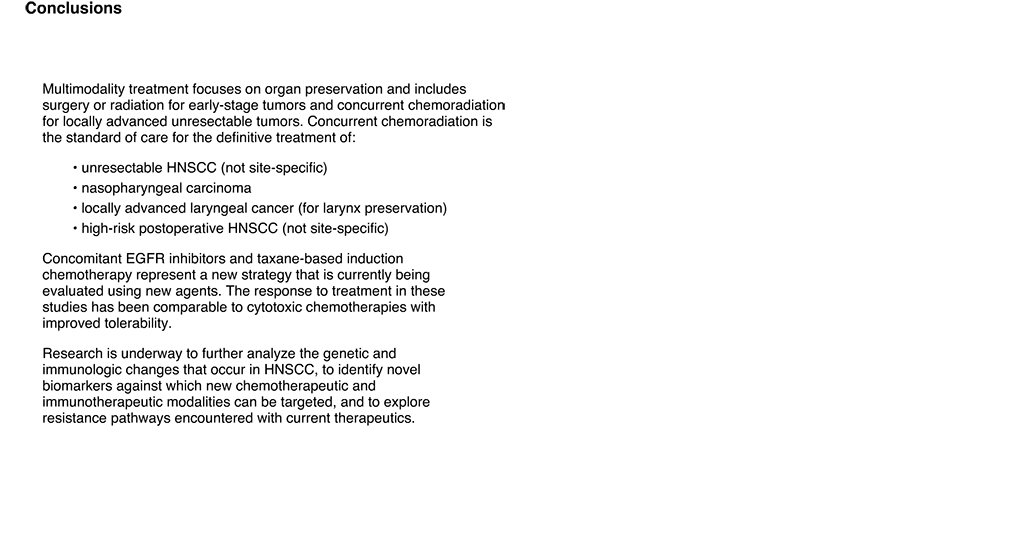SMi Source lesson Oncology: Head and Neck has the following microlearning topics
1. Learning Objectives
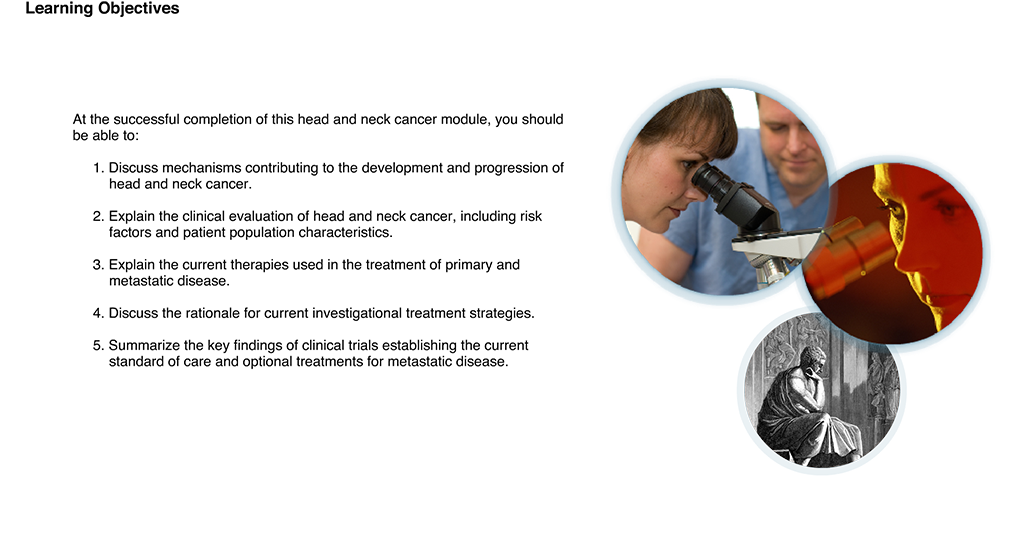

2. Introduction: Head and Neck Cancers
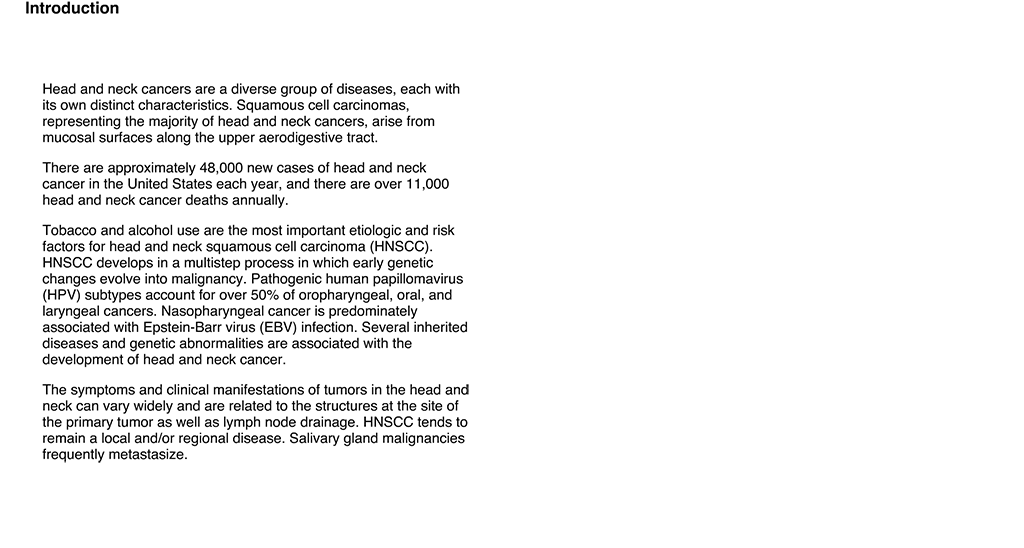

3. Introduction: Treatment for Head and Neck Cancers
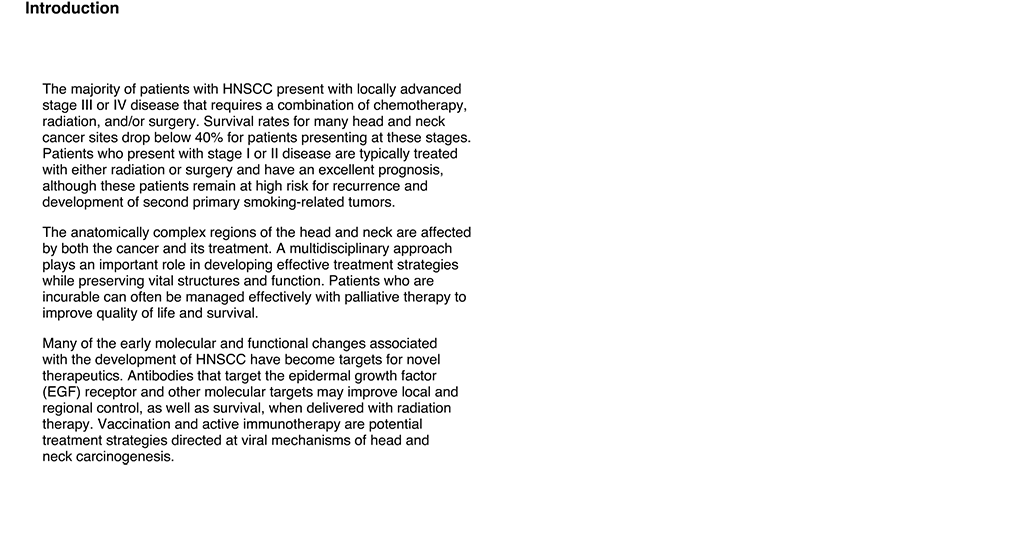

4. Introduction


5. Head and Neck Anatomy
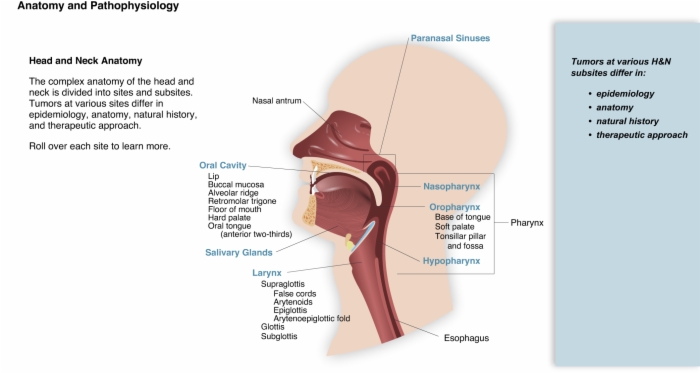

6. Head and Neck Anatomy


7. Cellular Classification: Squamous Cell Carcinoma
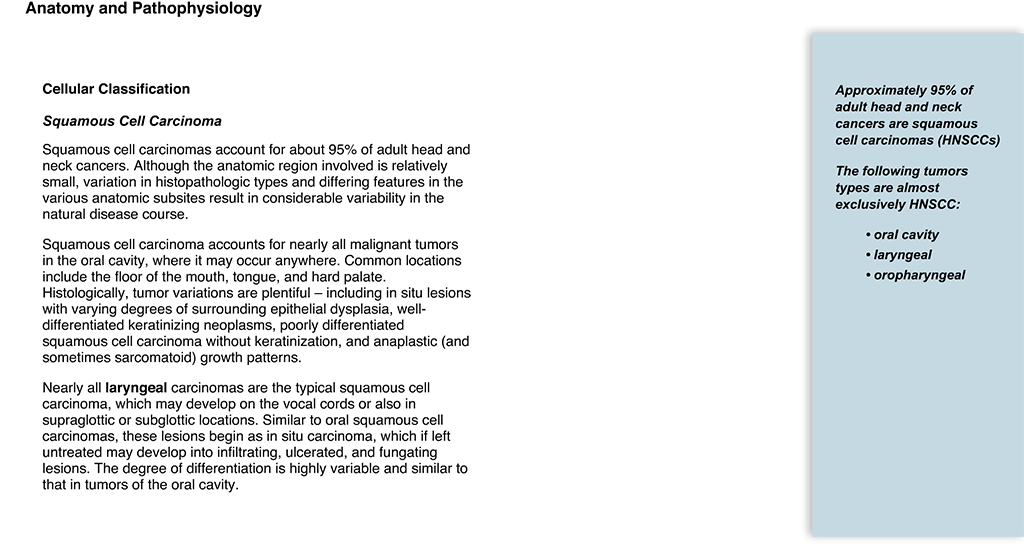

8. Cellular Classification: Nasopharyngeal Carcinoma


9. Cellular Classification: Salivary Gland Cancers
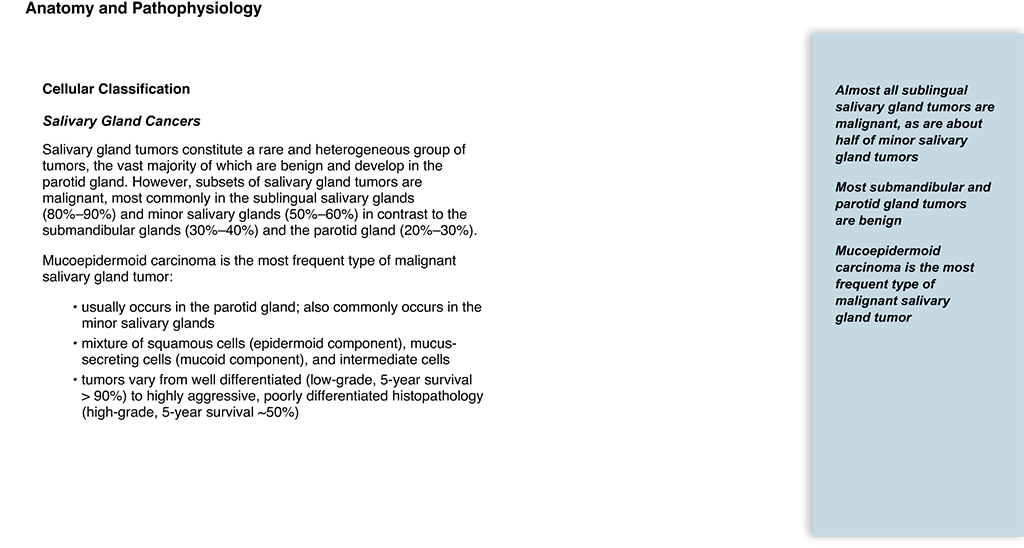

10. Cellular Classification: Malignant Salivary Gland Neoplasms
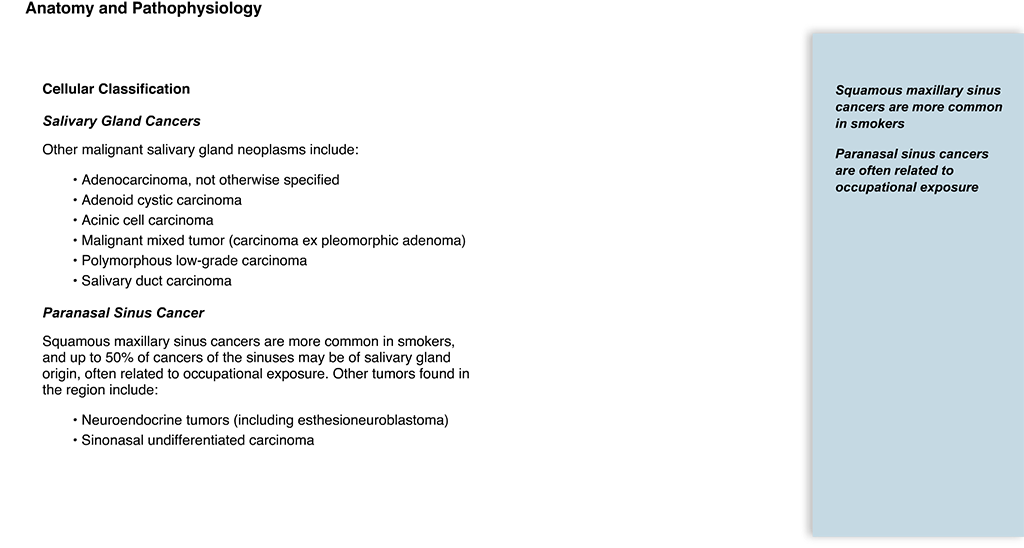

11. Risk Factors: Tobacco
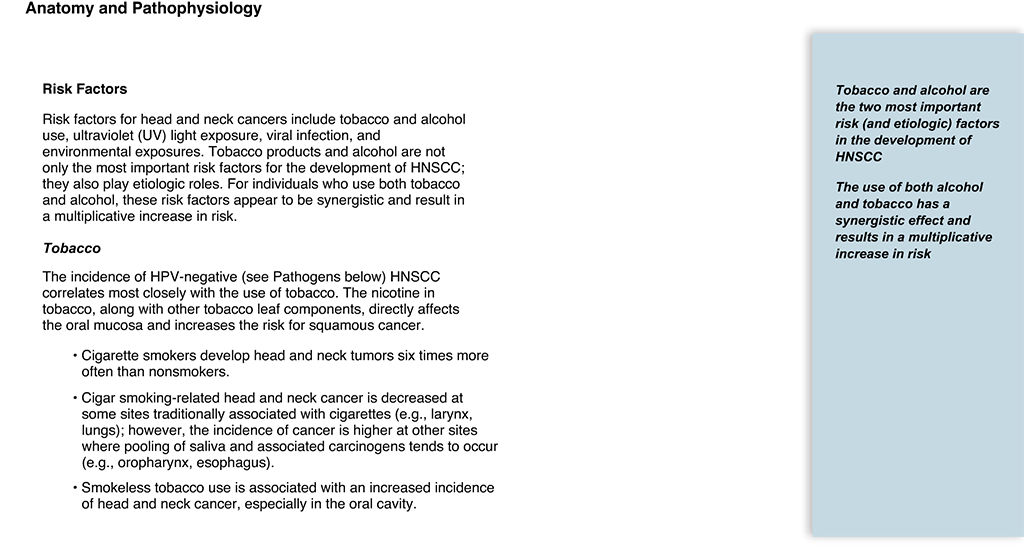

12. Risk Factors: Alcohol and Pathogens
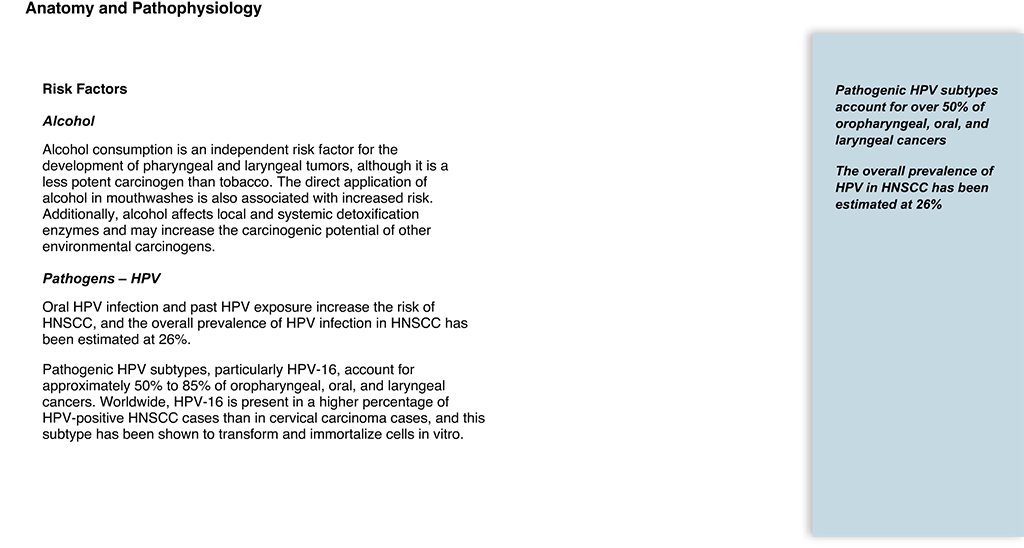

13. Risk Factors: Pathogens HPV
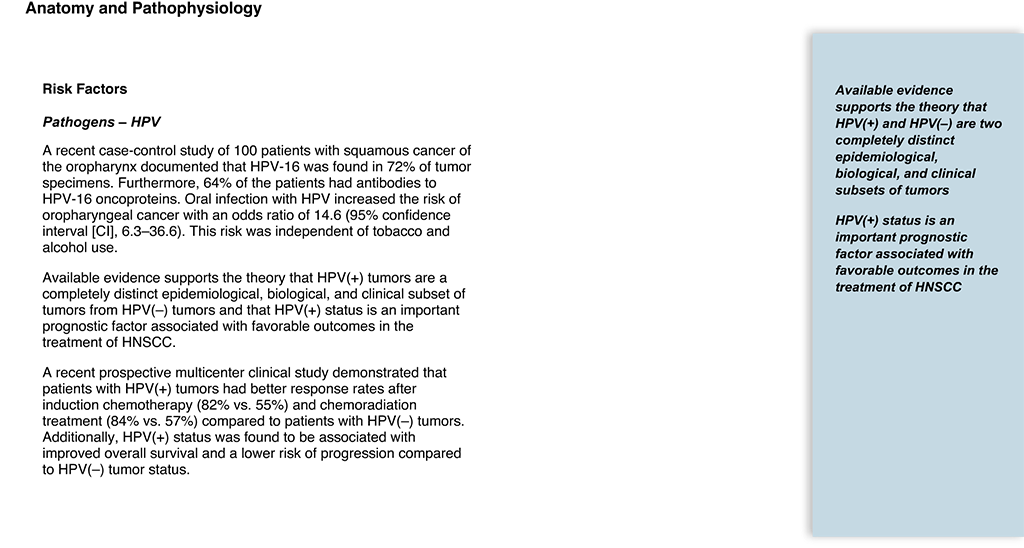

14. Risk Factors: Pathogens, UV Light Occupational and Radiation Exposures
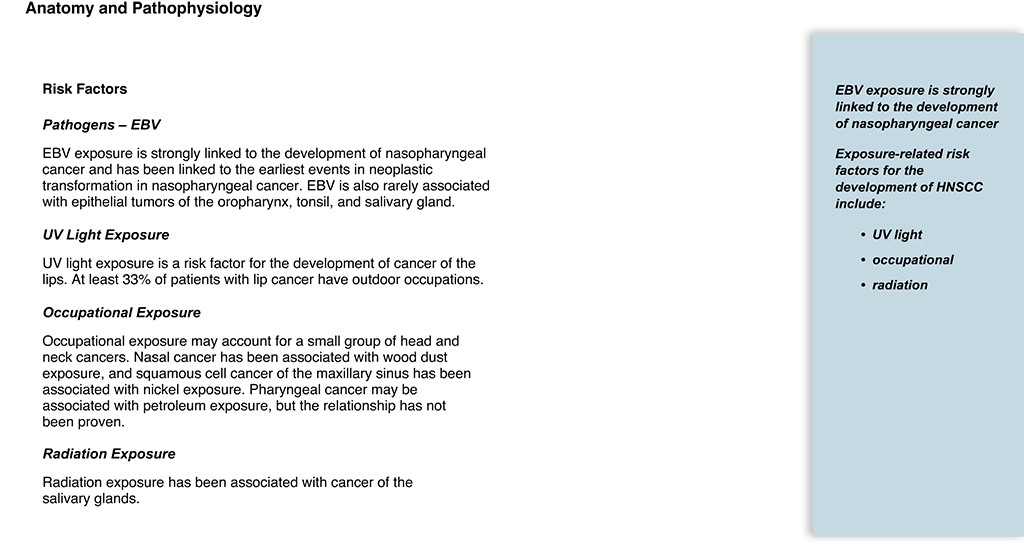

15. Risk Factors: Diet, Oral Hygiene and Inherited Conditions
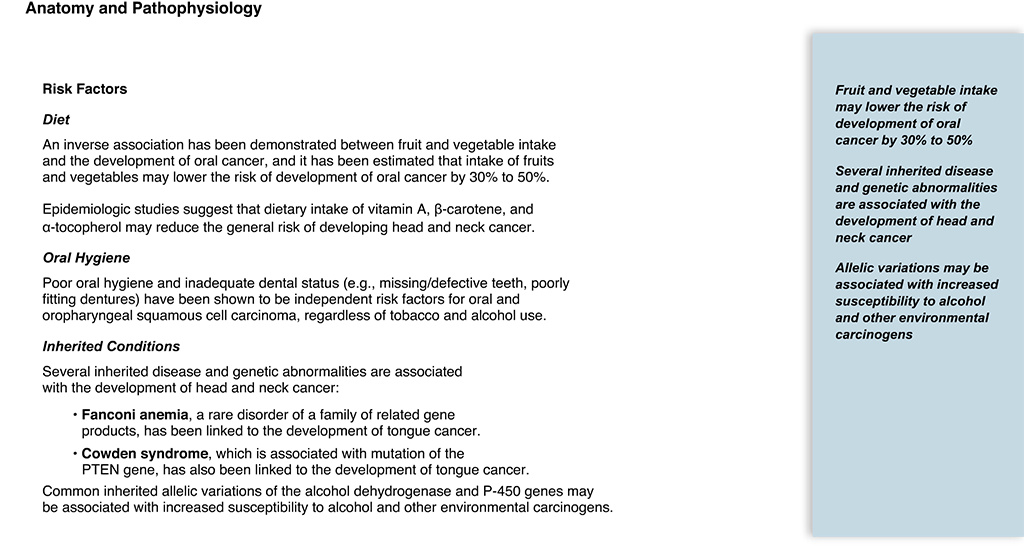

16. Mechanisms of Disease Development and Progression: Pathogenesis of HNSCC
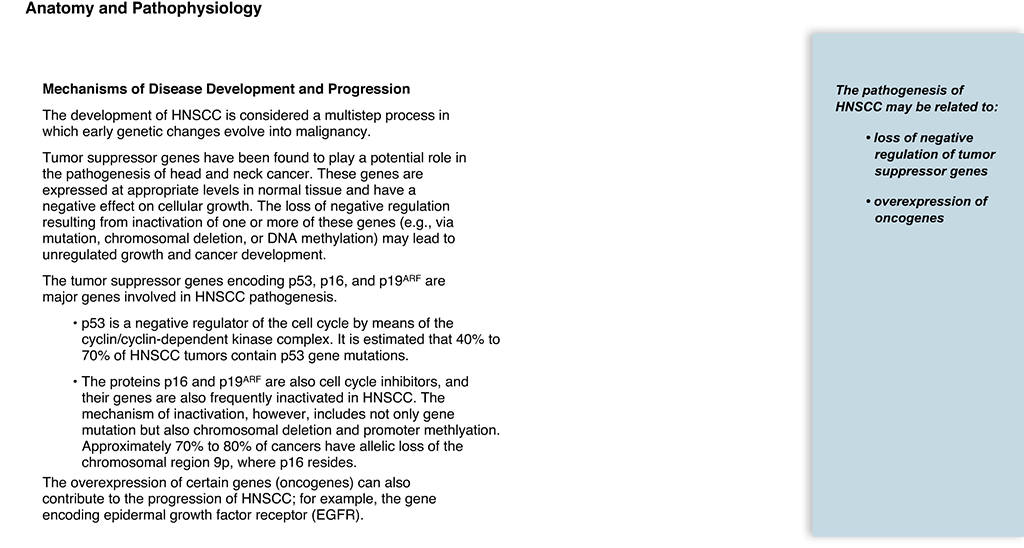

17. Anatomy and Pathophysiology
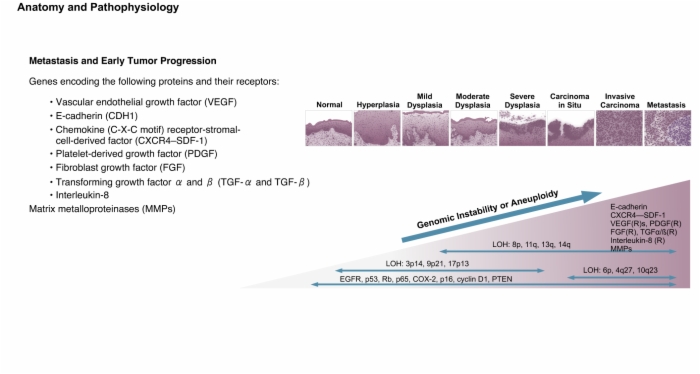

18. Anatomy and Pathophysiology
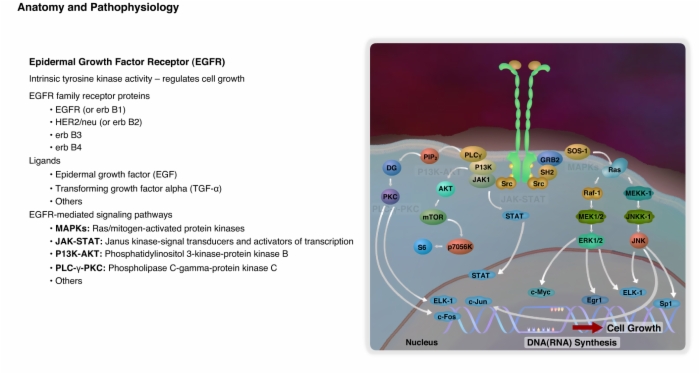

19. Mechanisms of Disease Development and Progression: Immune System Evasion
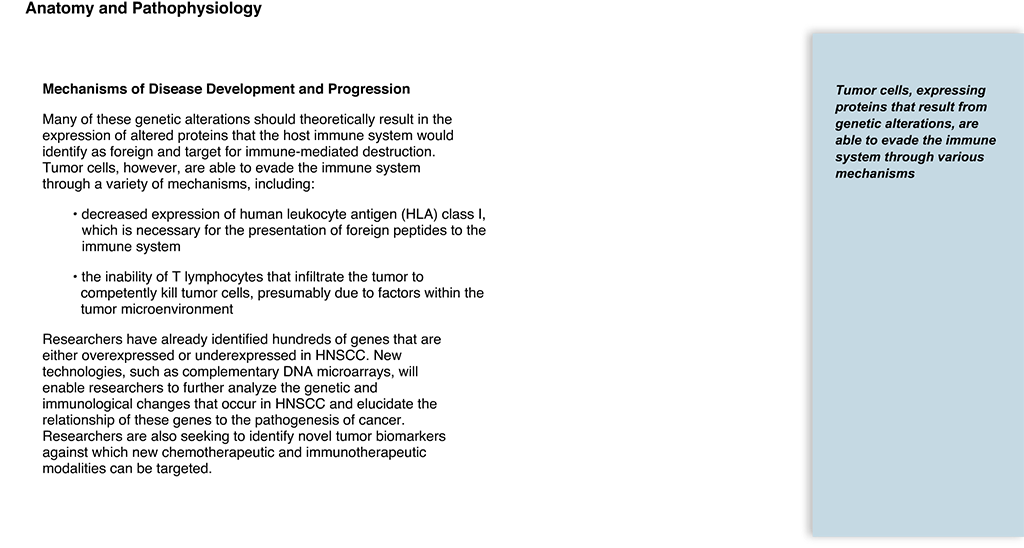

20. Incidence
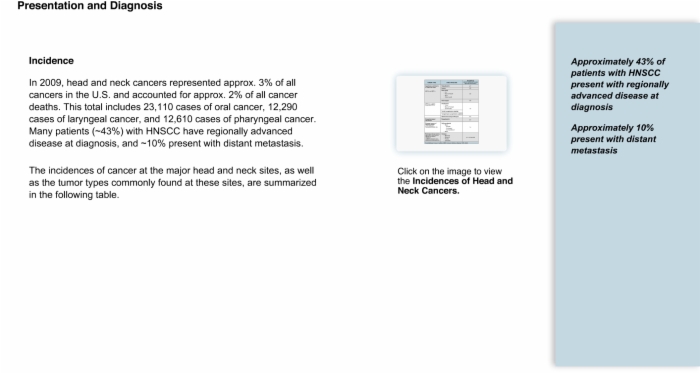

21. Epidemiology
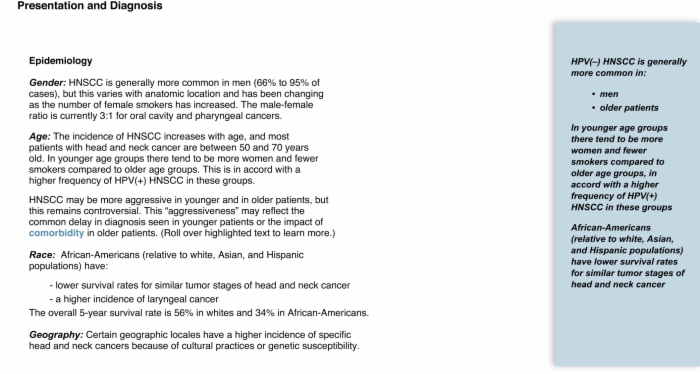

22. Clinical Presentation: Signs and Symptoms
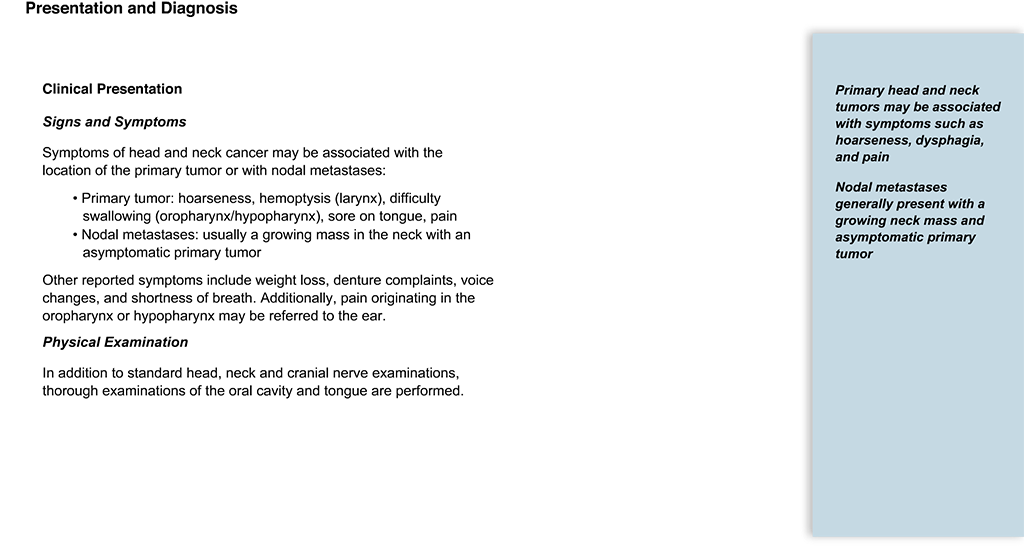

23. Clinical Presentation: Physical Examination
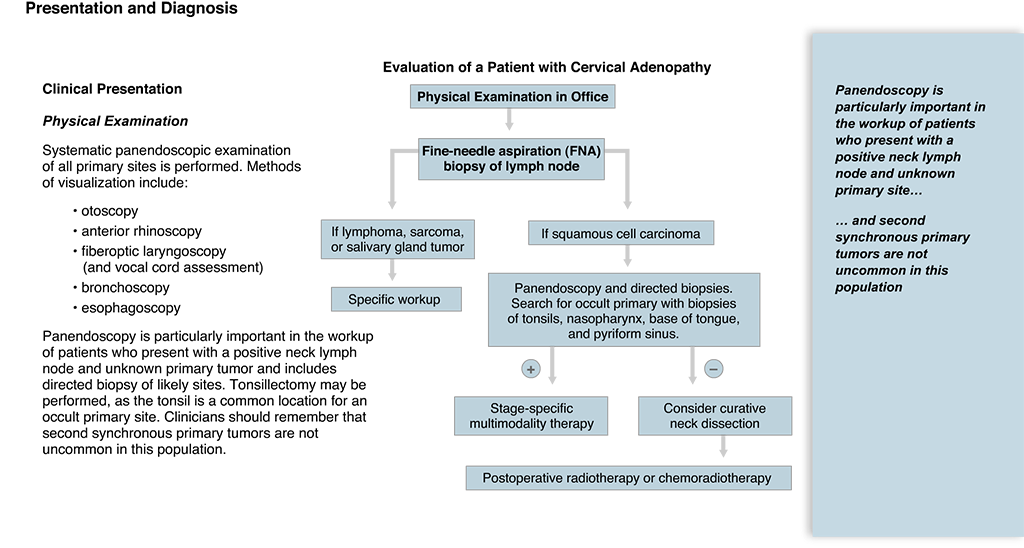

24. Clinical Presentation: Staging Investigations
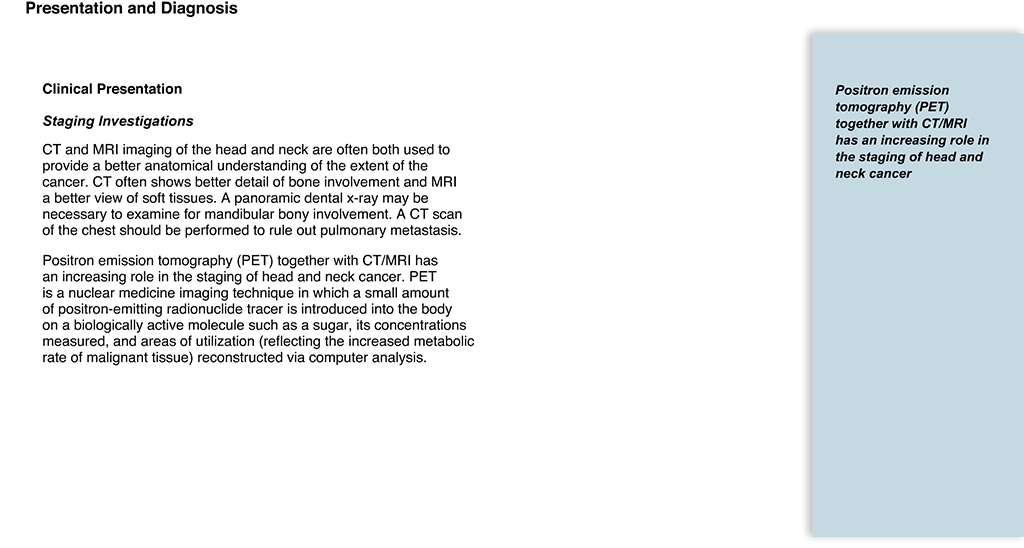

25. Staging
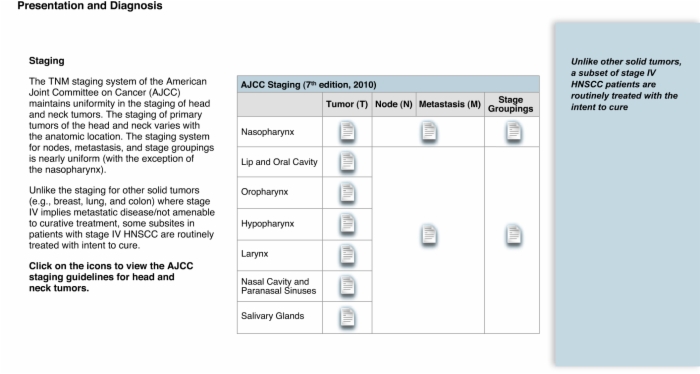

26. Treatment Overview: Head and Neck Cancers
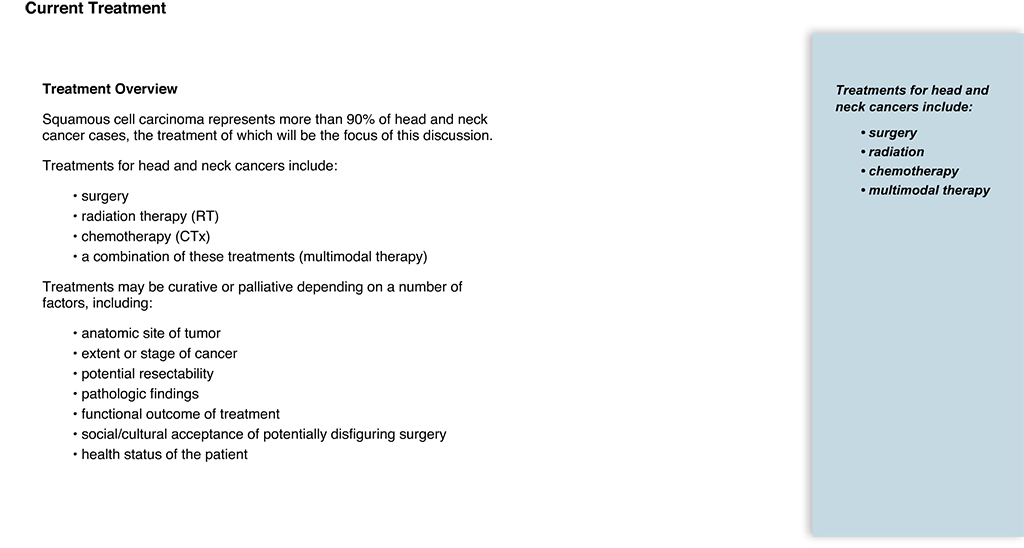

27. Treatment Overview: Status and Goals
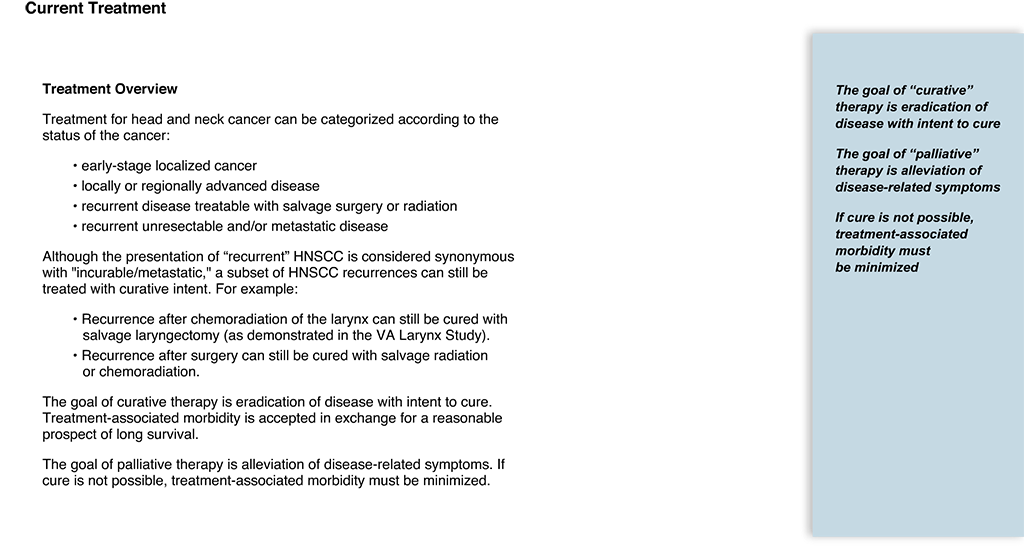

28. Treatment Overview: Therapies and Treatment
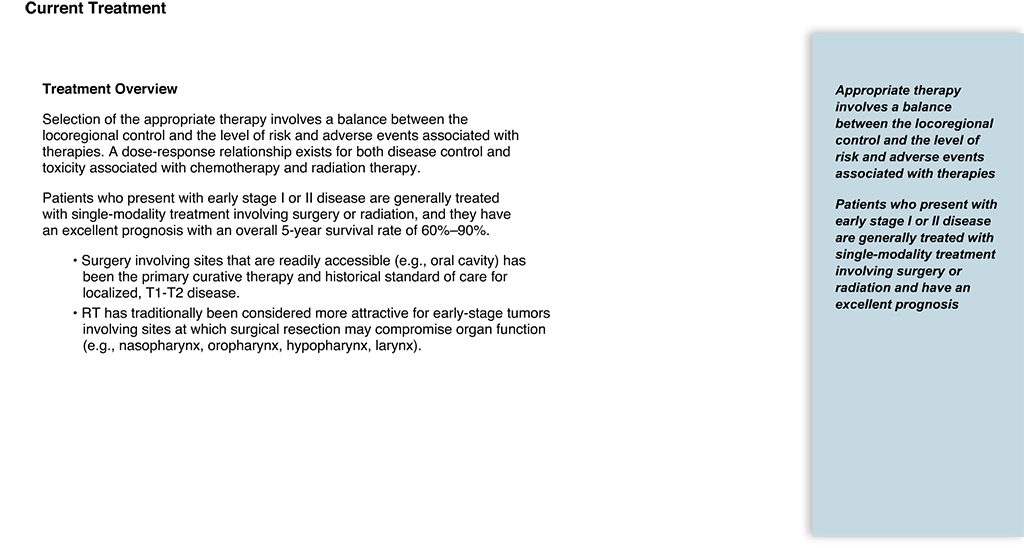

29. Treatment Overview: Additional Treatment and Surveillance
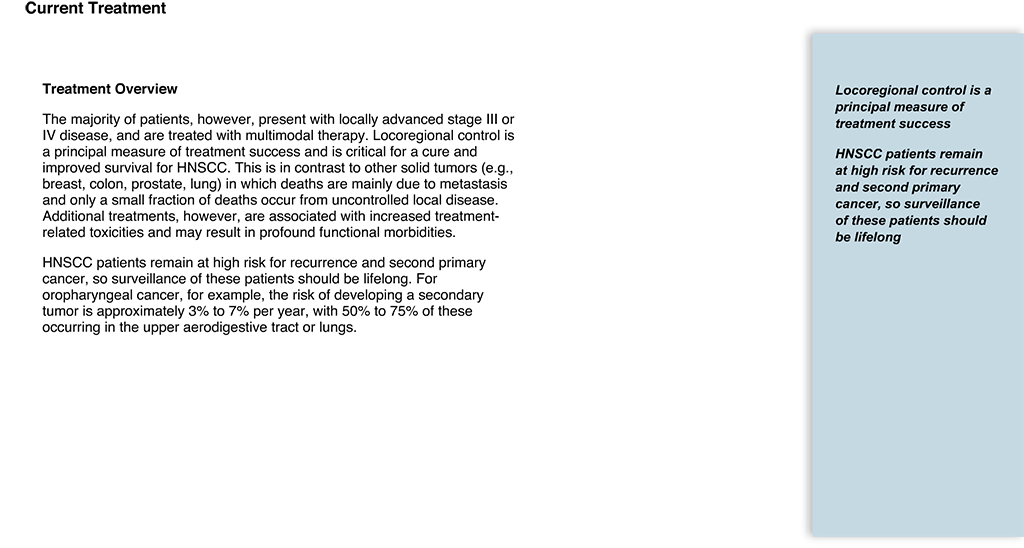

30. Impact of Disease and Treatment
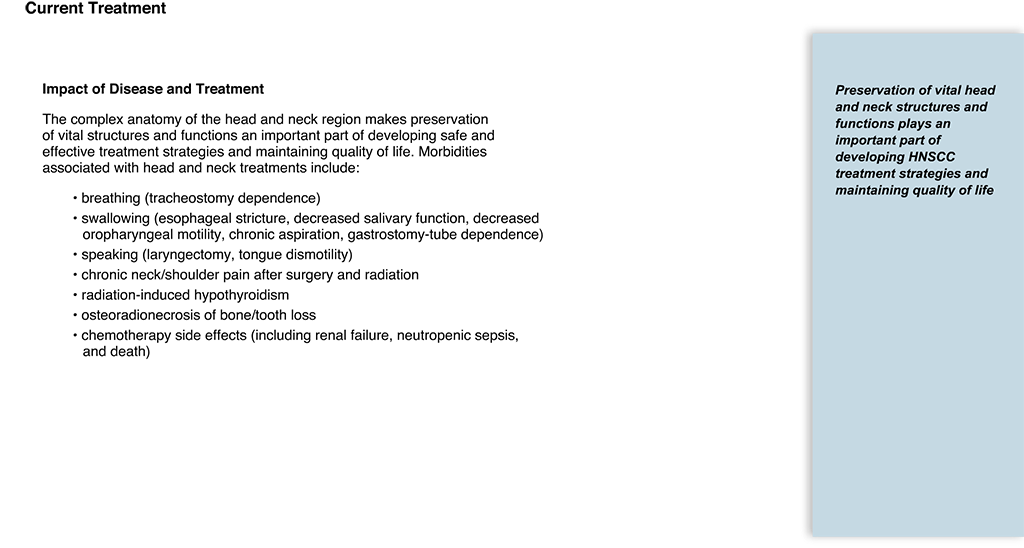

31. Curative Surgery


32. Radiation Therapy (RT): Treatment of HNSCC
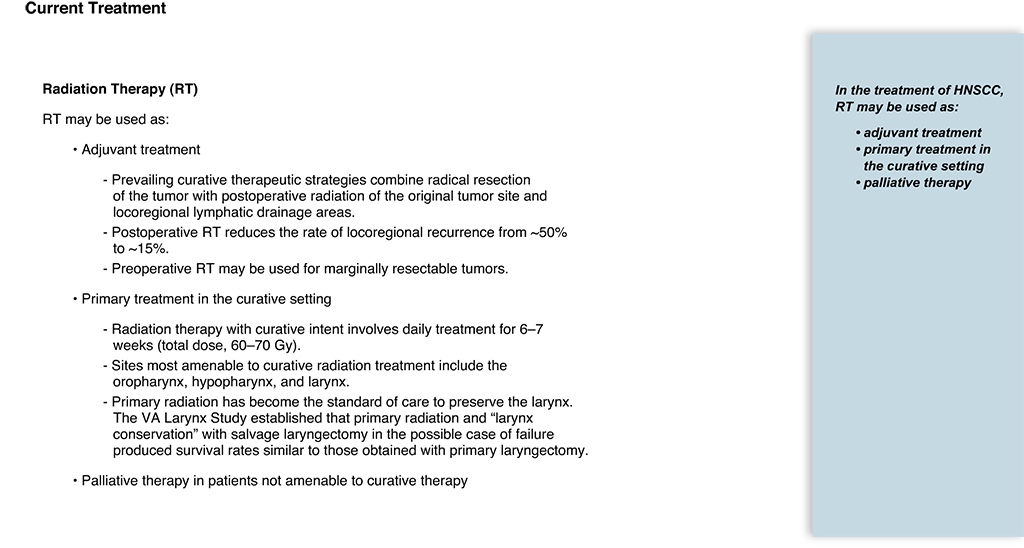

33. Radiation Therapy (RT): Radiation Fractionation, IMRT, Brachytherapy
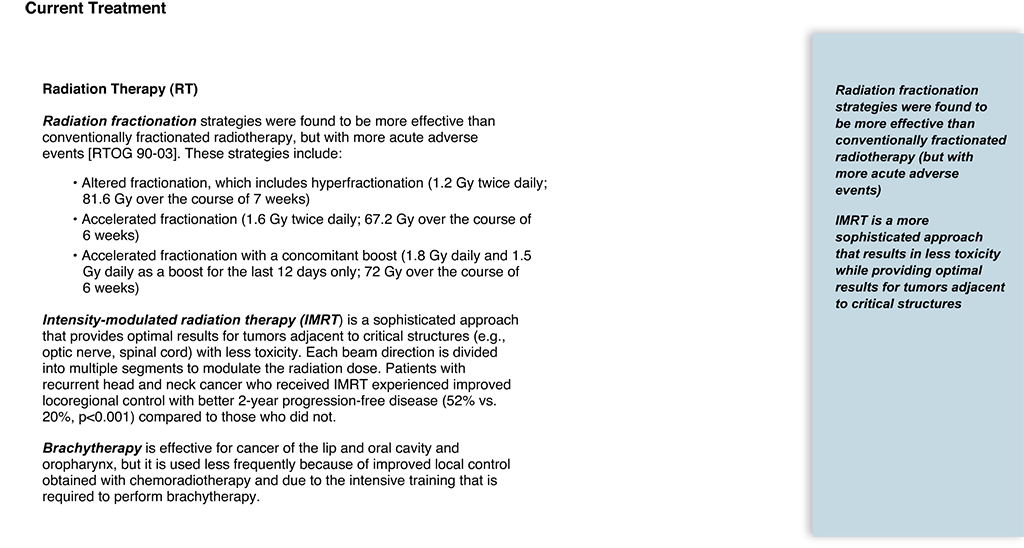

34. Radiation Therapy (RT): Complications
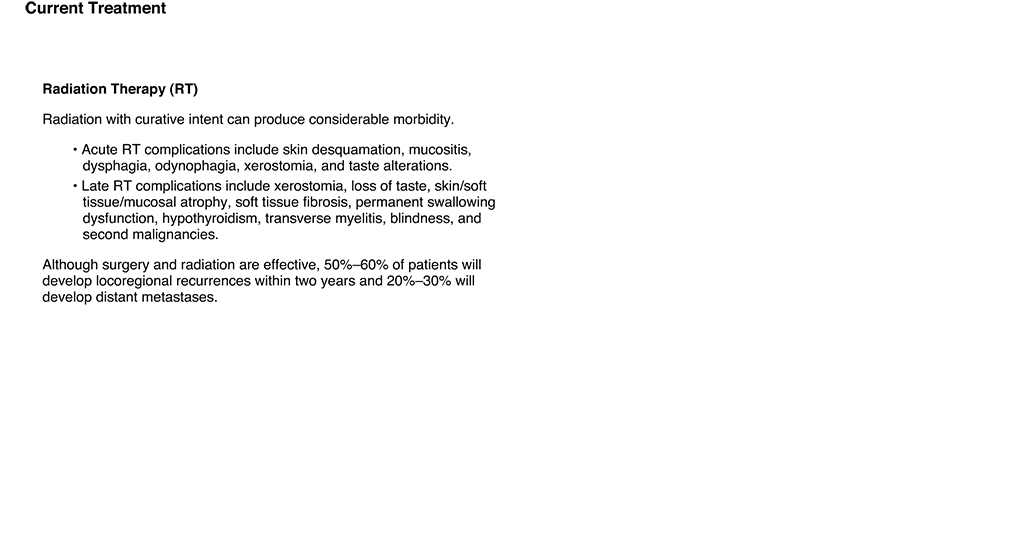

35. Chemotherapy (CTx): Advantages and Recommendations
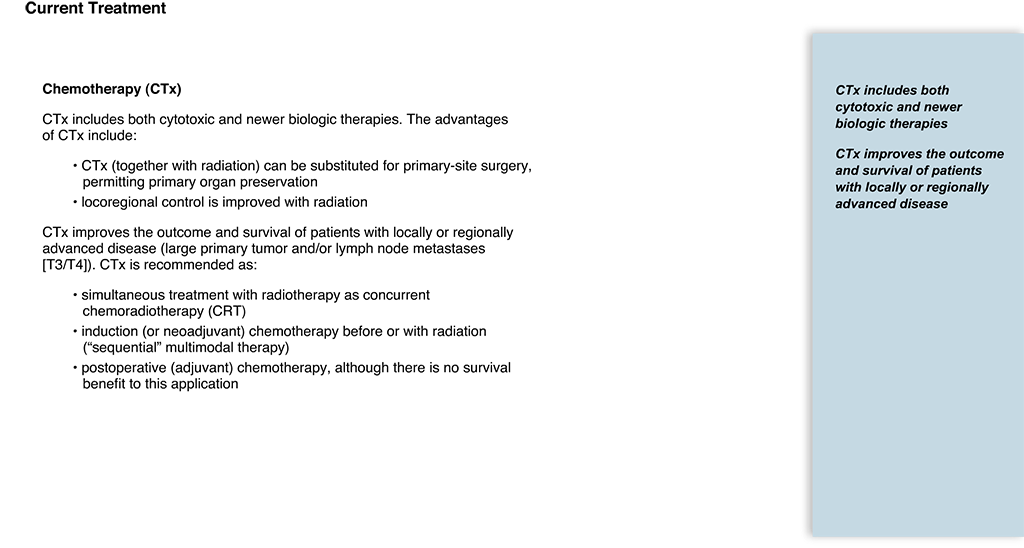

36. Chemotherapy (CTx): Concurrent Chemoradiotherapy (CRT), Induction Chemotherapy (IC)
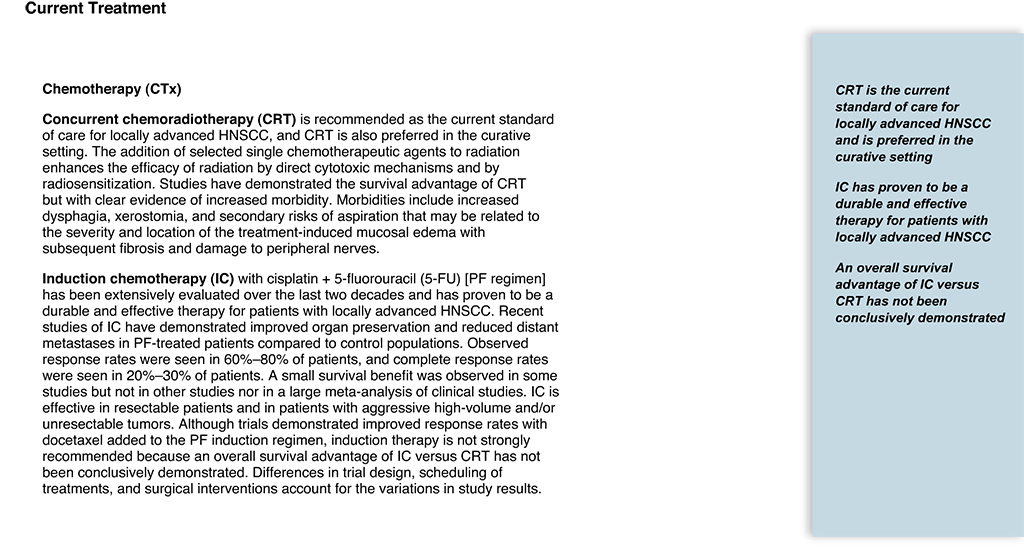

37. Chemotherapy (CTx): Recurrent, Unresectable, and Metastatic Cancer Chemotherapy
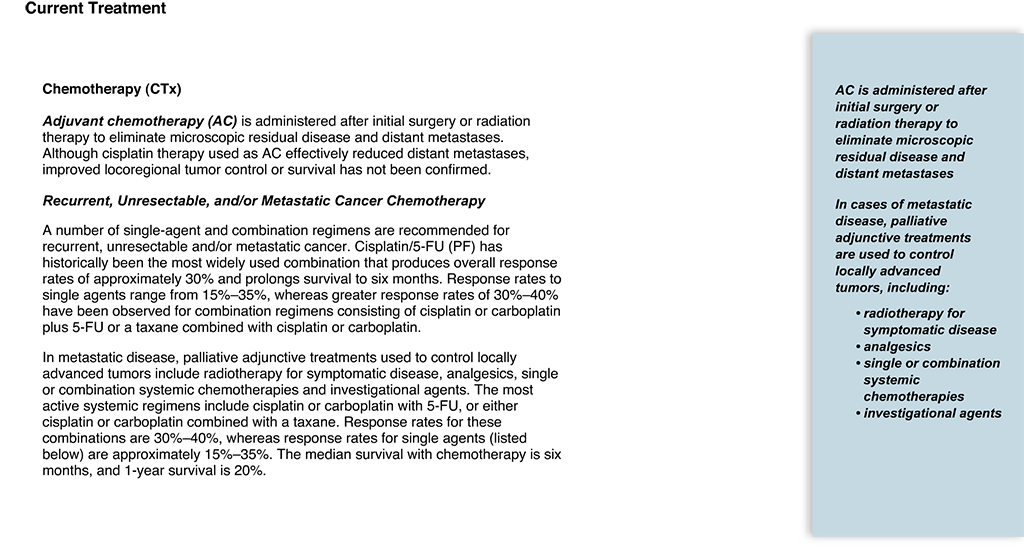

38. Chemotherapy (CTx): Toxicities of Treatment, HNSCC Chemotherapy Agents
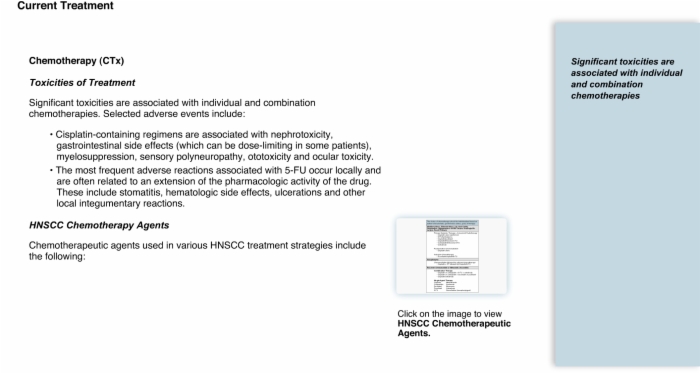

39. Palliative Therapy
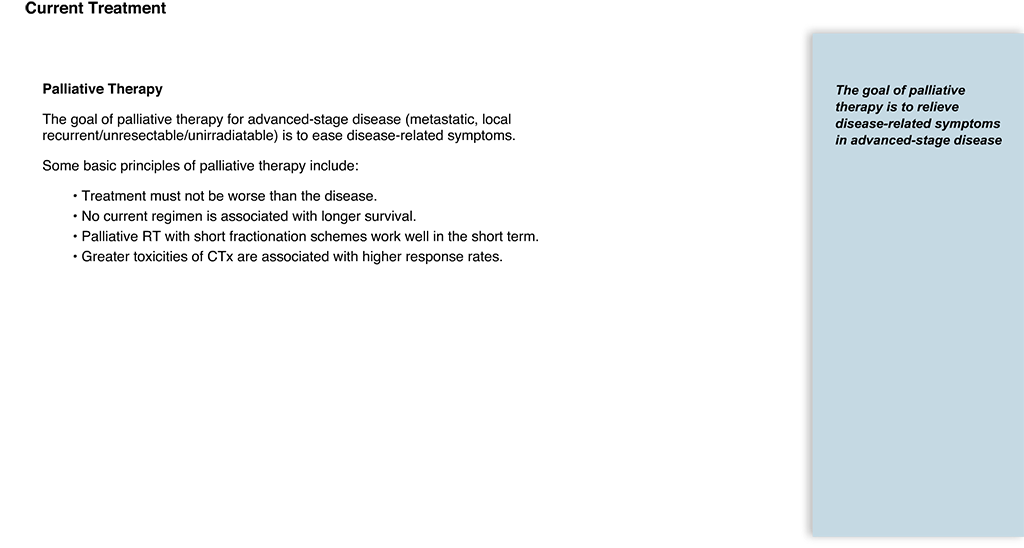

40. Salivary Gland Cancer


41. HPV-Positive HNSCC


42. Protocols
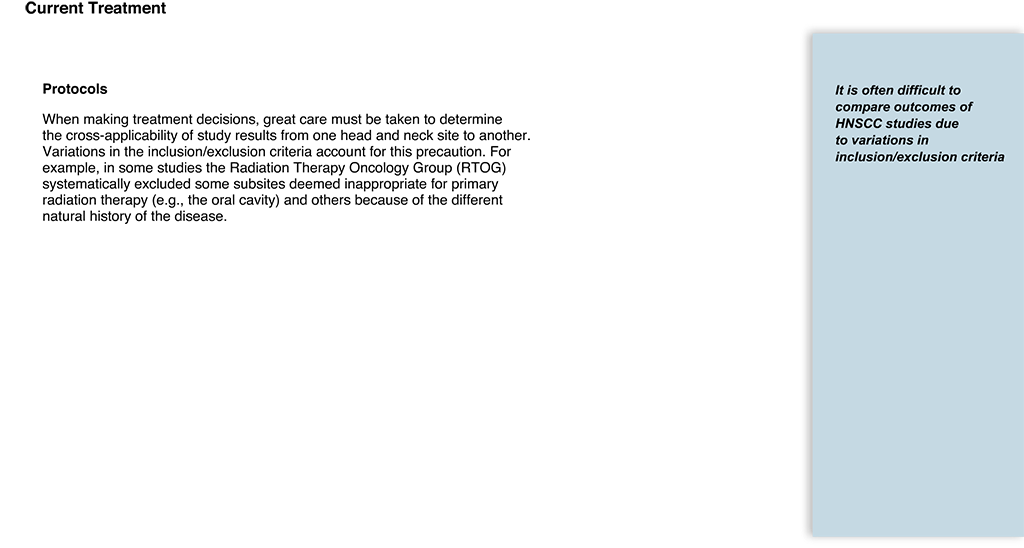

43. NCCN Treatment Guidelines


44. Overview: Investigational Strategies in the Treatment of Head and Neck Cancers
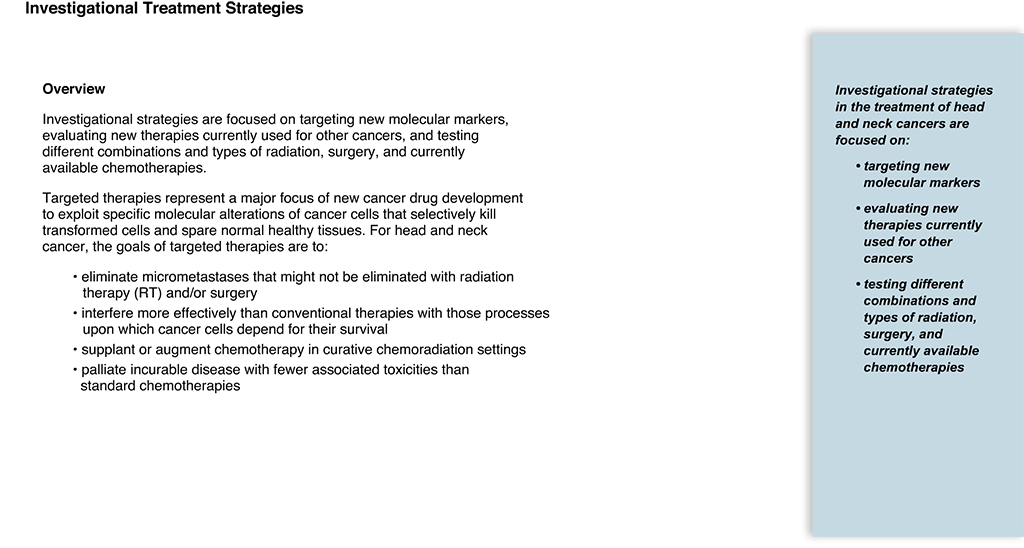

45. Epidermal Growth Factor Receptor (EGFR)


46. Tyrosine Kinase Inhibitors


47. TGF Pathway
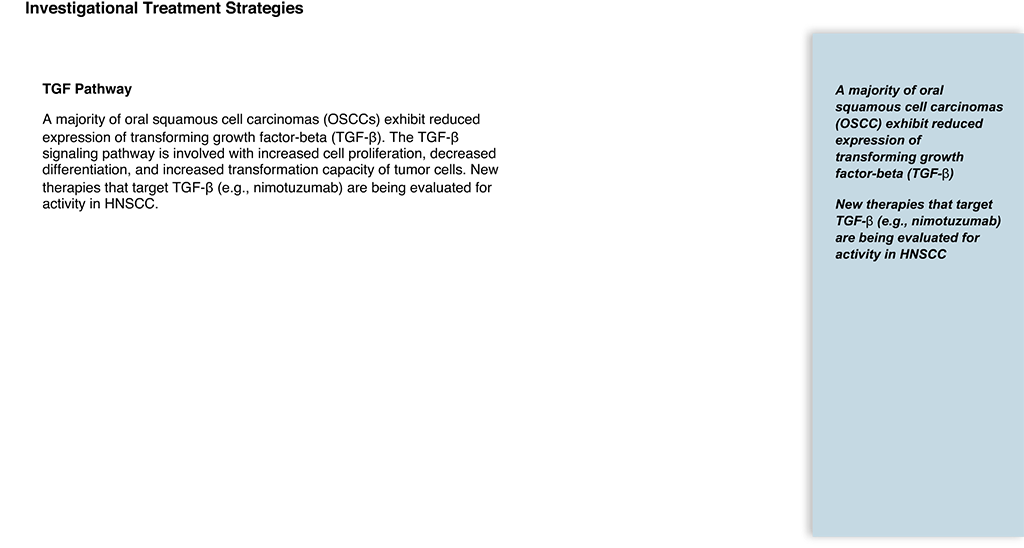

48. VEGF
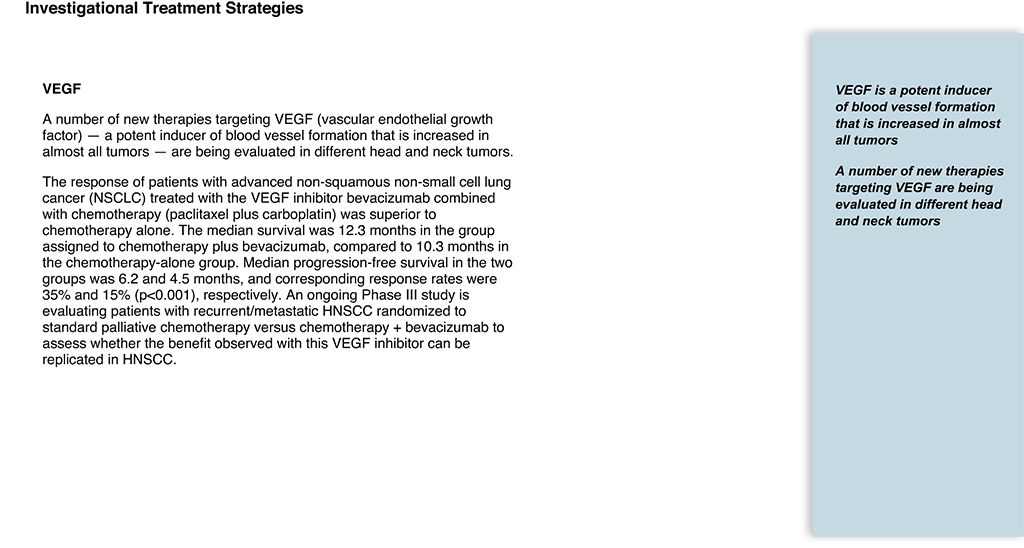

49. c-Kit and HER-2, Carcinoembryonic Antigen (CEA) and Targeted Therapy Clinical Trials for HNSCC
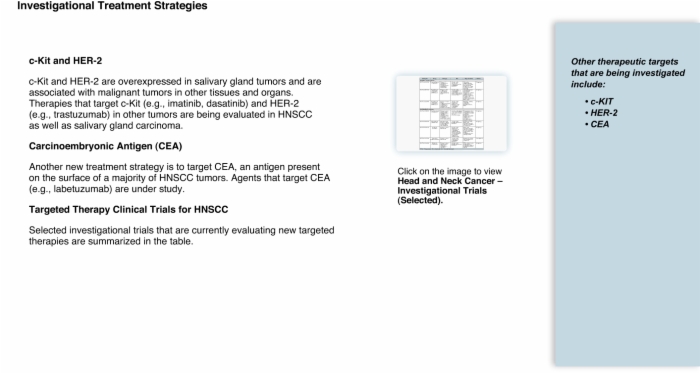

50. Vaccines for HNSCC
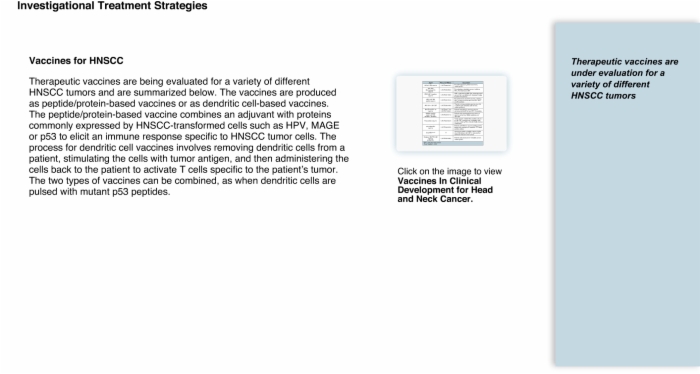

51. Evolution of Head and Neck Cancer Treatment
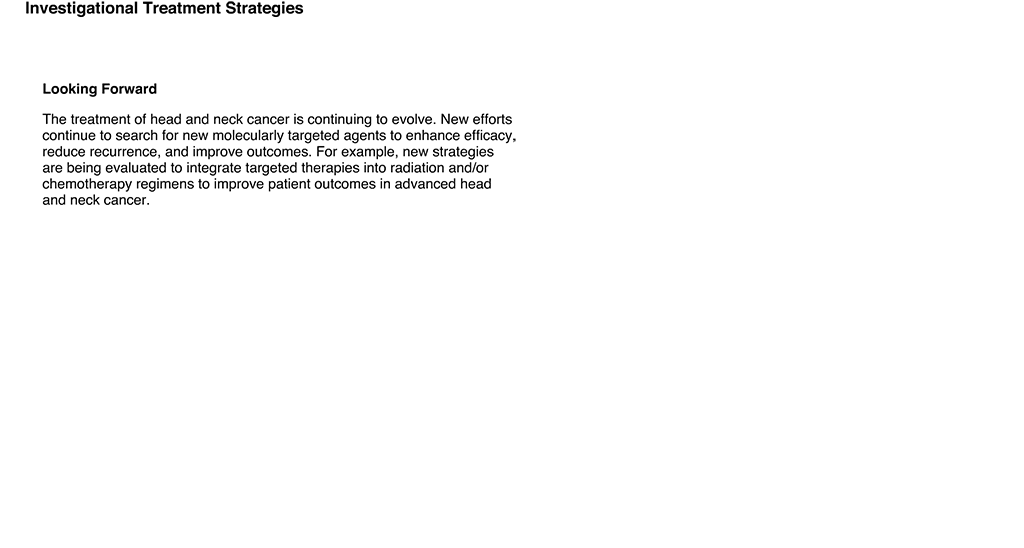

52. Radiotherapy Studies
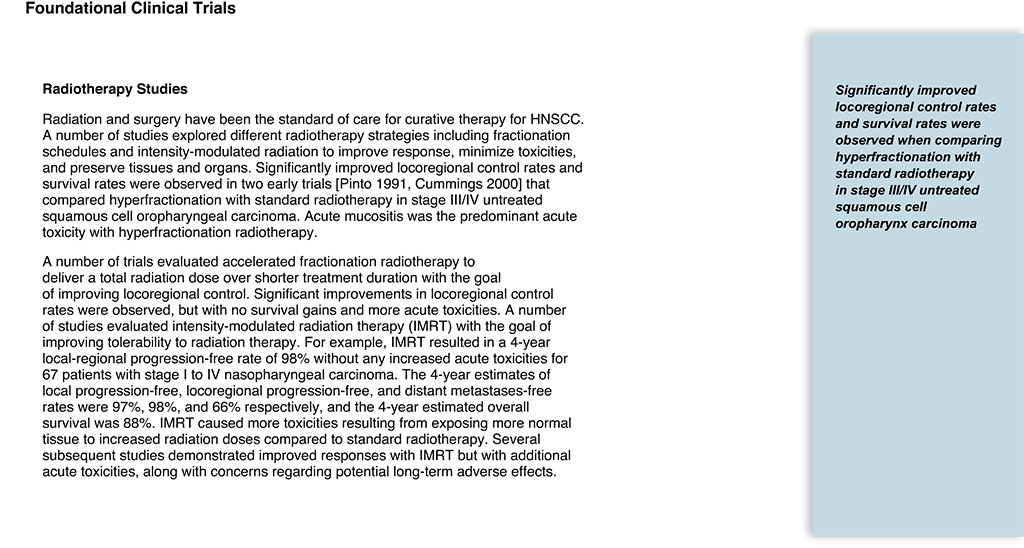

53. Postoperative Radiotherapy and Chemoradiotherapy
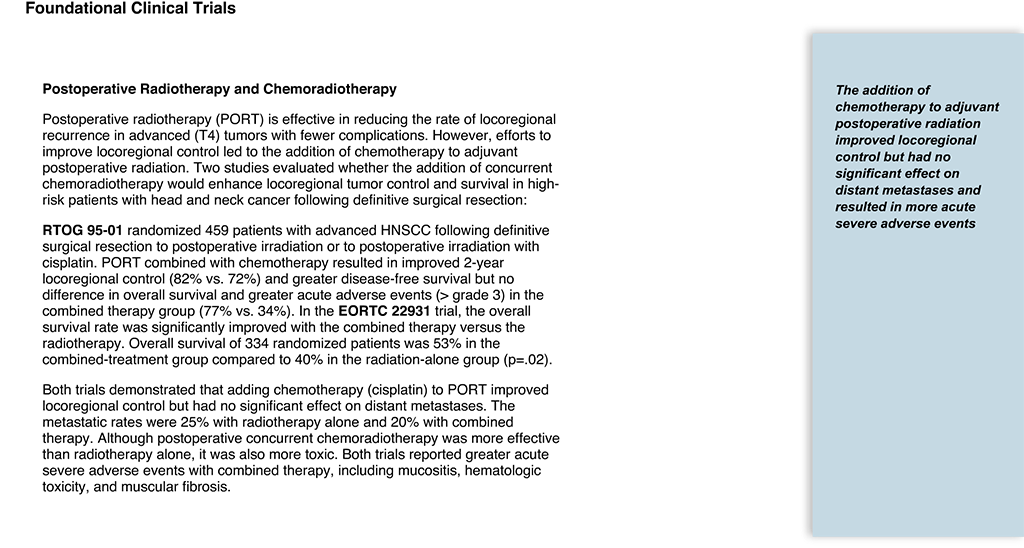

54. Concurrent Chemoradiation Regimens: Standard of Care
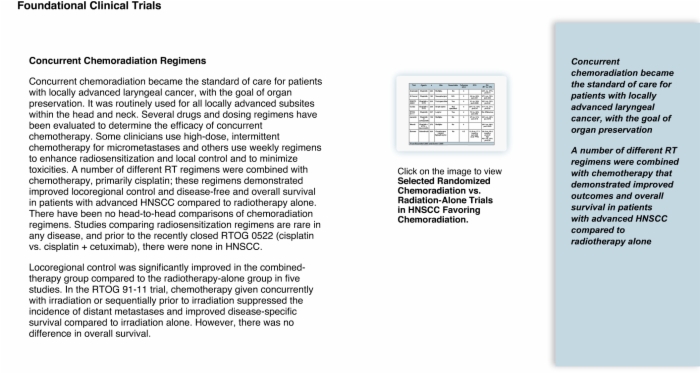

55. Concurrent Chemoradiation Regimens: Incidence of Acute Adverse Events
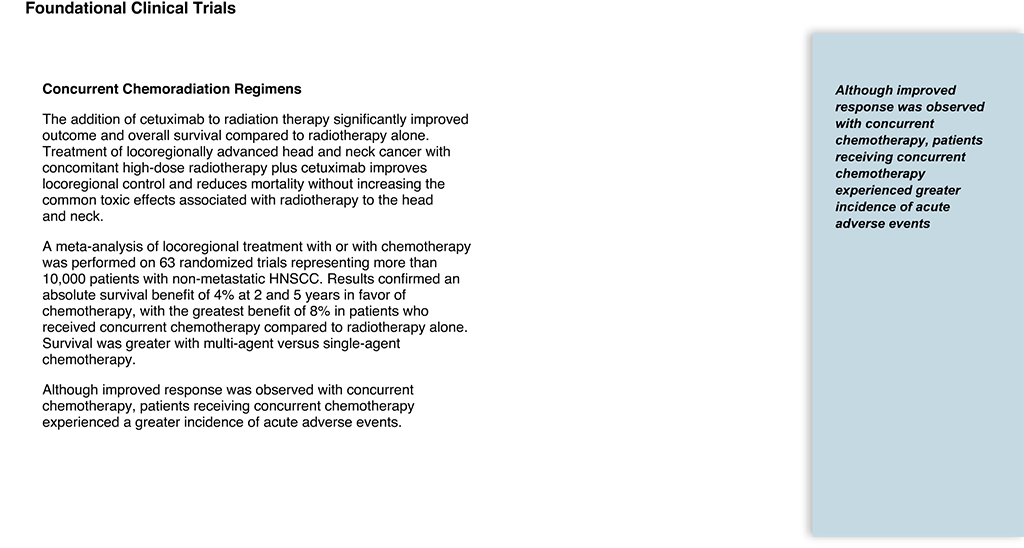

56. Induction Chemotherapy: TAX 232 and TAX 324 Studies
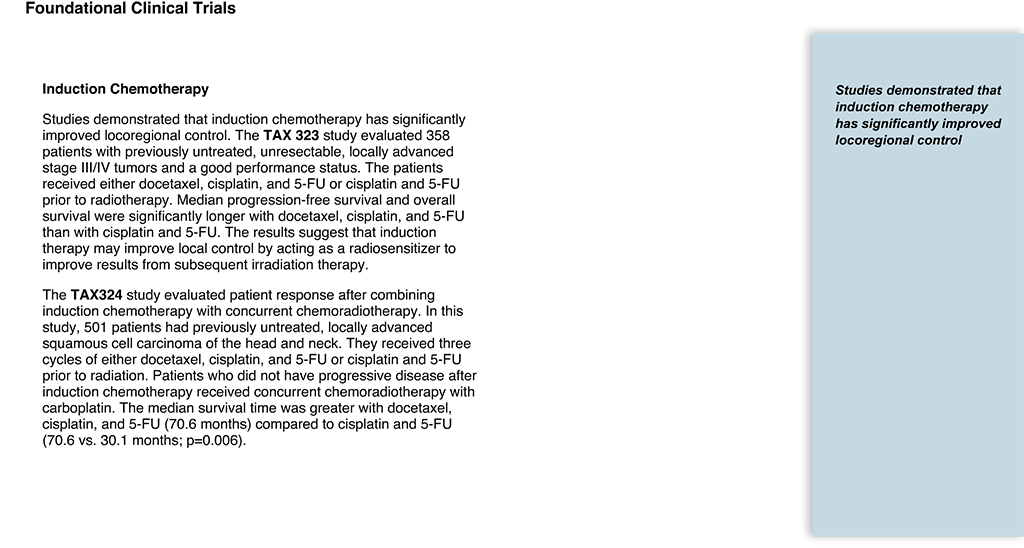

57. Induction Chemotherapy: VA Cooperative and RTOG 91-11 Studies
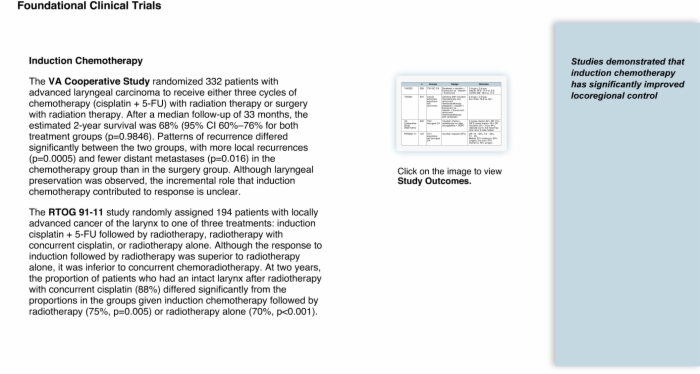

58. Recurrent Unresectable/Metastatic HNSCC
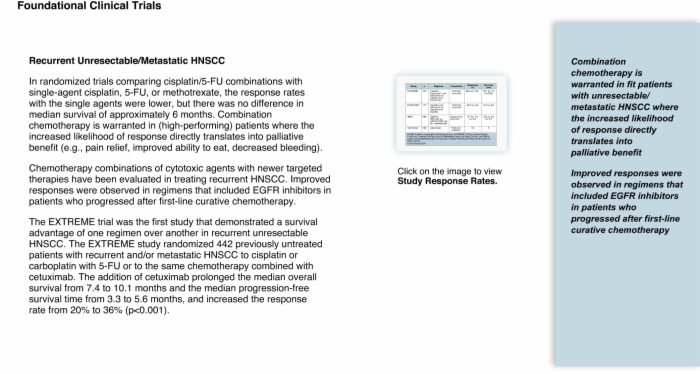

59. New Targeted Therapies: Molecular Therapies in HNSCC
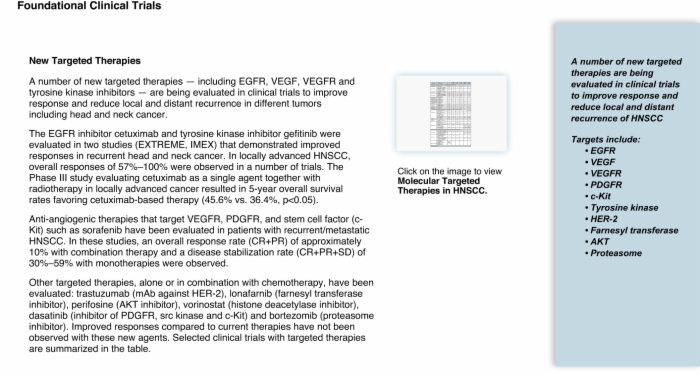

60. New Targeted Therapies: Targeted Therapies as Single Therapies
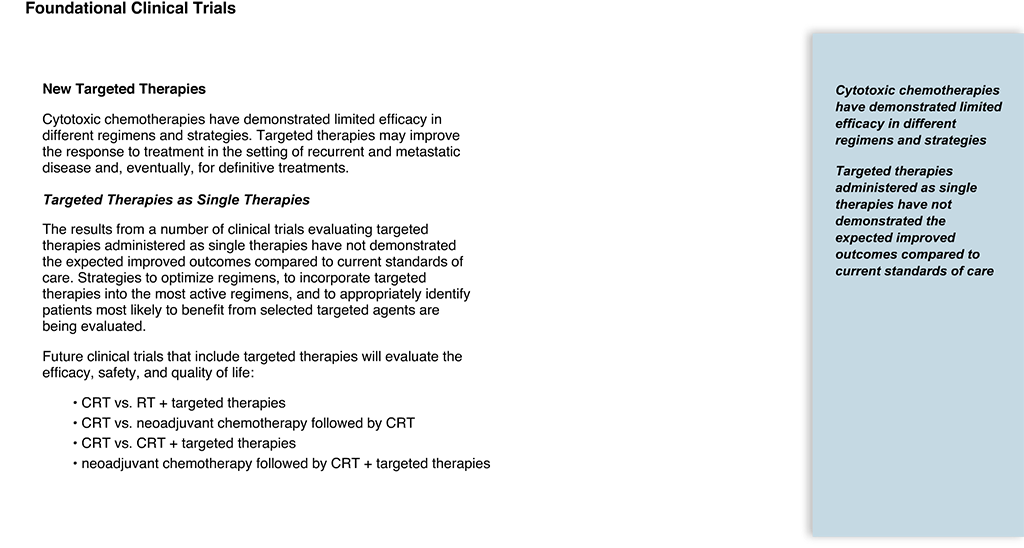

61. Salivary Gland Cancer
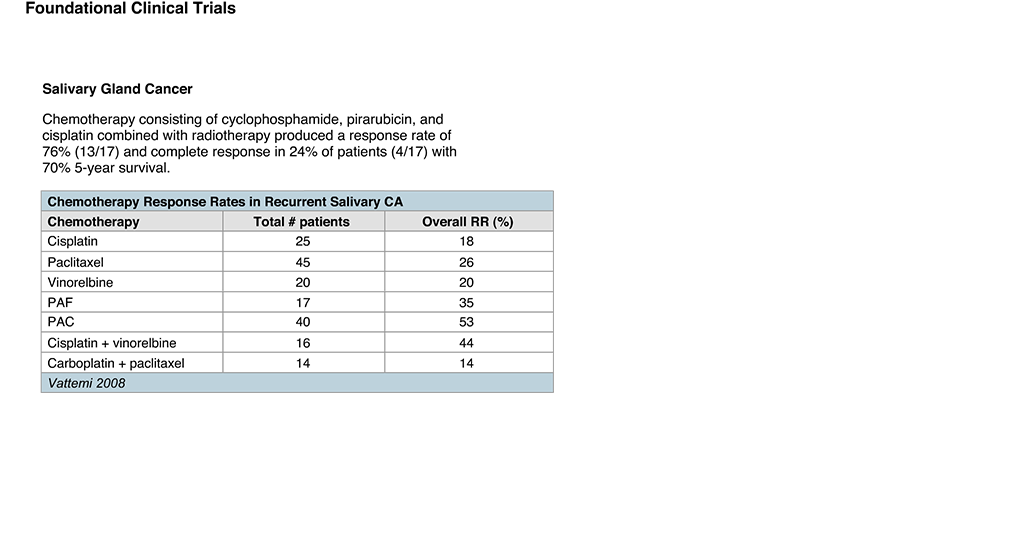

62. Conclusions: Head and Neck Cancer Epidemiology and Genetics


63. Conclusions: Head and Neck Treatment
